Did you know that by 2025, nearly two-thirds of the world’s population could face water scarcity? As our communities grow and climate change accelerates, the challenge of providing safe, reliable drinking water grows ever more urgent. Reverse osmosis desalination is emerging as a key solution—empowering plant managers and water treatment experts to turn even seawater and brackish sources into clean, fresh water. In this comprehensive guide, discover how this advanced technology unlocks the hidden power of water molecule filtration to safeguard our future water supply.
The Critical Need for Reverse Osmosis Desalination in Modern Water Treatment
Water scarcity is no longer a distant threat; it’s a pressing, global issue. Diminishing freshwater resources, climate change, and rapid urbanization have strained conventional water sources and stressed municipal water supply systems. Many regions now depend on technology to meet basic water needs, making reverse osmosis desalination an essential component of modern water treatment strategies. This transformative process utilizes a reverse osmosis system to remove dissolved salts, contaminants, and impurities—producing fresh water from seawater and brackish water sources.
For plant managers, the adoption of reverse osmosis desalination means more than just compliance with regulatory standards; it’s a commitment to providing safe, high-quality drinking water and preserving environmental sustainability. As water reverse osmosis advances become more accessible and cost-effective, desalination plants can better address demands of growing populations and industries. By investing in robust osmosis membrane and high-pressure pump technologies, water treatment facilities are well-poised to deliver reliable, long-term solutions—even in regions suffering acute water shortages.

"According to the United Nations, two-thirds of the global population could face water scarcity by 2025. Reverse osmosis desalination offers an innovative solution to secure our future water supply."
What You'll Learn about Reverse Osmosis Desalination and Water Treatment
How reverse osmosis desalination systems function
Key components such as the RO membrane and high-pressure pumps
Performance metrics in desalination plants
Advantages and challenges facing reverse osmosis desalination
Insights into water molecule filtration and water quality improvements
Essential considerations for plant managers implementing RO systems
Understanding the Basics of Reverse Osmosis Desalination
To manage and operate state-of-the-art water treatment facilities, plant managers must first grasp the fundamentals of reverse osmosis desalination. At its core, this process leverages a reverse osmosis membrane as a selective, semipermeable barrier that allows water molecules to pass while blocking dissolved salts and contaminants. The reverse osmosis system utilizes high-pressure pumps to push seawater or brackish water against the membrane, effectively separating pure water from solutes. This osmosis desalination method offers flexibility, allowing plants to adapt treatment protocols based on input water source, whether it’s from a desalination plant on a coastline or a brackish groundwater well.
Reverse osmosis is exceptionally effective at removing not only salts but also microorganisms and organic molecules—crucial for securing safe, potable water. Plant managers rely on the performance of the RO membrane, alongside regular system maintenance, to guarantee consistent water quality. As these systems become increasingly energy-efficient through technological innovation, their integration into water res operations is transforming water treatment in both municipal and industrial settings.
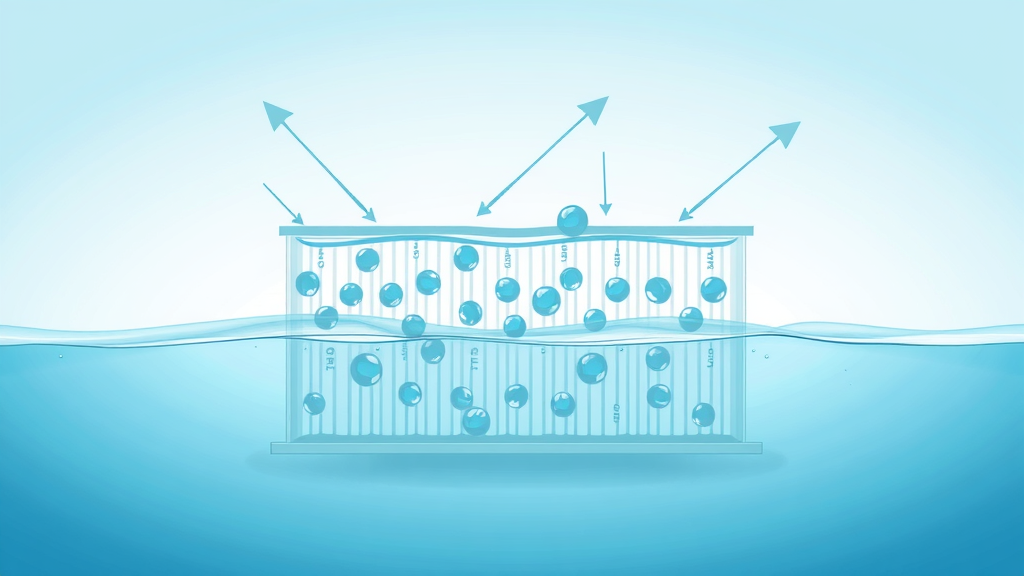
Reverse Osmosis Explained: How Water Molecules Pass Through the RO Membrane
The heart of reverse osmosis desalination lies in the movement of water molecules across a specialized semipermeable membrane. In an osmosis system, water naturally flows from a low to high concentration of solutes. But in a reverse osmosis system, the process is inverted: high pressure is applied to push water molecules from a saline or contaminated side, forcing them through the membrane,” which blocks dissolved salts and impurities.
This reverse osmosis membrane is engineered to enable only very small water molecules to pass, removing up to 99% of dissolved salts, organic contaminants, and unwanted particles. The result is fresh water of high purity, ready for drinking or industrial use. Because plant managers control key operational factors—such as pressure, temperature, and flow rate—they can optimize the efficiency and lifespan of the membranes, ultimately enhancing water quality for communities relying on the desalination process.
Osmosis System vs. Reverse Osmosis System: Key Differences in Water Desalination
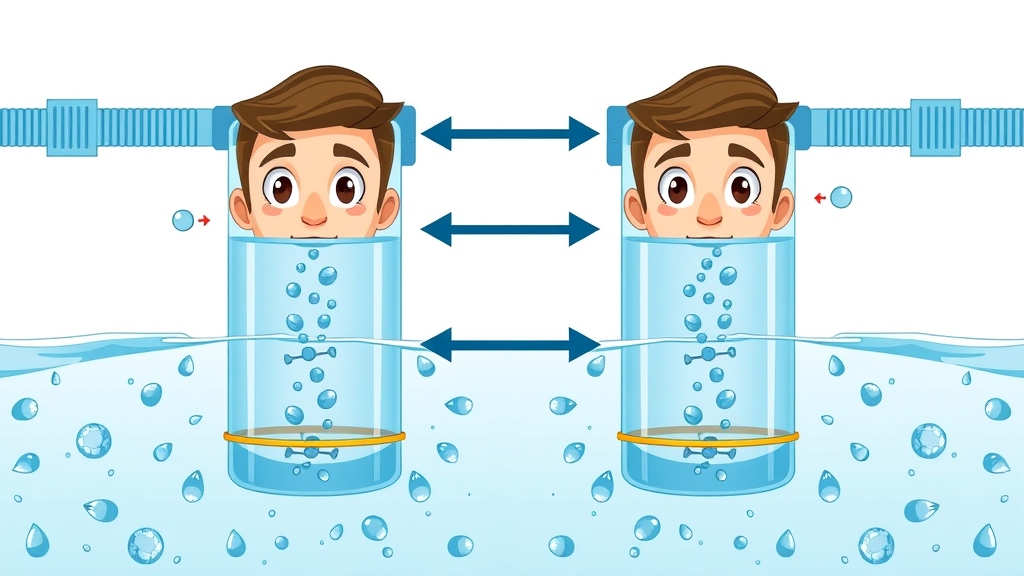
The terms “osmosis” and “reverse osmosis” describe two related yet fundamentally different processes in water treatment. In a traditional osmotic process, water naturally migrates through a permeable membrane from a region of low solute concentration to high concentration, seeking equilibrium. However, this naturally occurring process cannot desalinate seawater or brackish water effectively, as it favors diluting the salty side.
A reverse osmosis system counters this by applying high external pressure—using pressure pumps—on the side with higher solute concentration. This pushes pure water molecules against the osmotic gradient and through the semipermeable membrane, leaving salts and larger contaminants behind. The technical distinction gives plant managers unparalleled control over water purity, as only reverse osmosis desalination can efficiently transform highly saline or contaminated water into fresh water at scale.
The Role of Osmotic Pressure in Reverse Osmosis Desalination
Osmotic pressure is a fundamental concept that drives both natural osmosis and its engineered counterpart, reverse osmosis. In a standard osmosis system, osmotic pressure naturally moves water molecules towards higher solute concentrations until equilibrium is reached. In reverse osmosis desalination, a high pressure is applied to surpass this natural osmotic pressure, forcing water to flow backward—away from the dissolved salts and contaminants. This distinction is critical for plant managers tasked with designing efficient desalination plants.
Understanding and precisely managing osmotic pressure empowers operators to calibrate their RO systems for specific water sources, whether handling seawater desalination or treating brackish water. It also allows for improved energy efficiency, a key operational goal, as the balance between applied pressure and permeate recovery can determine both the environmental impact and cost-effectiveness of the water treatment operation.
Anatomy of a Reverse Osmosis Desalination Plant
Modern desalination plants are complex, high-tech facilities that transform water source—be it seawater or brackish groundwater—into clean, drinking water. For plant managers, understanding the stepwise desalination process is essential to maintaining optimal operation. The typical plant includes stages for water intake, pre-treatment, reverse osmosis filtration, energy recovery, and post-treatment to ensure regulatory compliance and superior water quality. Each stage is designed for efficiency: pressurized water passes through robust RO membranes, while advanced monitoring systems oversee flow rates and salt rejection.
Desalination plant staff—including engineers and technicians—continuously monitor critical metrics like feedwater salinity, membrane condition, and final water quality. With rising demand for fresh water, these facilities increasingly rely on innovations such as energy recovery devices and modular plant layouts to boost productivity and reduce costs. Ultimately, the anatomy of a reverse osmosis plant is meticulously structured to maximize water recovery while meeting environmental and economic imperatives.
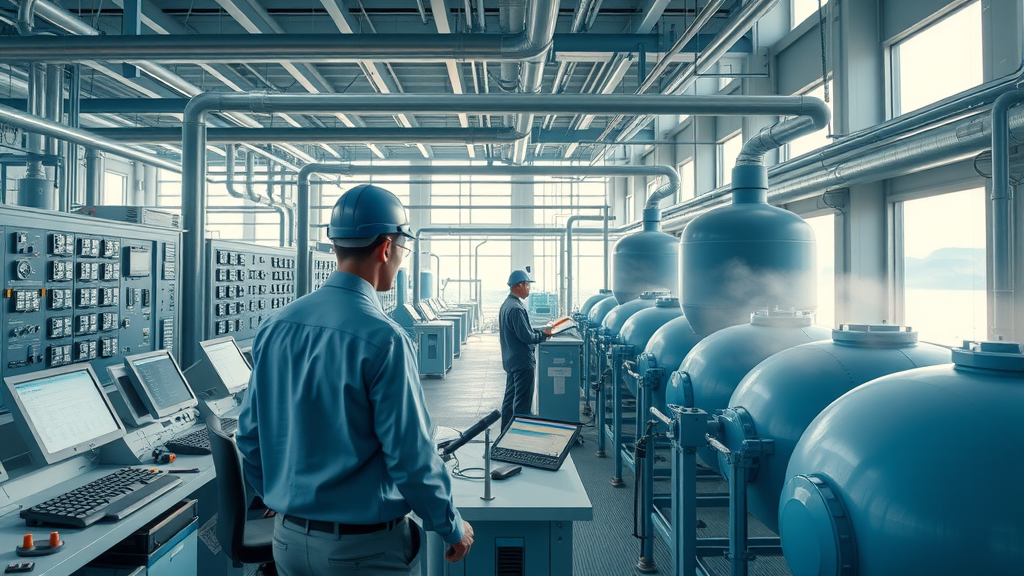
Desalination Process Stages: From Water Source to Fresh Water Production
The journey from raw water source to potable fresh water in a reverse osmosis desalination plant follows several critical steps. First, seawater or brackish water is drawn into the system and undergoes pre-treatment—removing larger debris and chemical contaminants that might harm the RO membrane. Next, high-pressure pumps drive pre-treated water through the heart of the system: the reverse osmosis membrane, which separates pure water from dissolved salts and impurities. The high-pressure stage generates concentrated brine as a byproduct while allowing clean permeate to collect on the other side of the membrane.
This desalination process doesn’t end at filtration; post-treatment stages often add minerals for taste and health, while energy recovery devices recapture excess pressure energy to lower the plant’s operational costs. In the final output, plant managers oversee the blending and delivery of water, ensuring it meets drinking water standards and is ready for municipal distribution or industrial use. By carefully managing each stage, operators guarantee both efficiency and reliability in their water treatment missions.
Key Equipment: RO Membrane, Pressure Pump, and Energy Recovery Devices
Three essential components define every effective reverse osmosis desalination plant: the RO membrane, the pressure pump, and the energy recovery device. The RO membrane acts as a highly selective barrier, allowing only water molecules to pass and blocking dissolved salts and contaminants. To power this separation, a high-pressure pump applies force greater than the natural osmotic pressure, ensuring robust water flow across the membrane. High-pressure operation is especially important when treating seawater, which requires more energy to overcome its higher salt content than brackish water.
Energy recovery devices reclaim energy from the pressurized brine stream, dramatically reducing power consumption. This innovation can cut the energy costs of an RO system by up to 60%, which is significant for plant managers aiming to maximize both cost effectiveness and environmental sustainability. The integration of advanced monitoring and control systems ensures these core components operate in harmony, delivering high water quality and plant efficiency day after day.
Desalination Plant Layouts: Optimizing Water Treatment Flow
Plant layout is a crucial factor in the efficiency and reliability of a reverse osmosis desalination facility. Effective layouts ensure smooth water flow through each process stage, reducing pressure losses and optimizing the performance of pumps, membranes, and auxiliary systems. Centralized placement of monitoring and control rooms enhances operational oversight, enabling real-time intervention if water quality, pressure, or membrane integrity deviates from set parameters.
Modular plant design, featuring scalable and flexible RO system units, makes it easier to upgrade or expand capacity when demand for drinking water rises. Strategic placement of energy recovery devices, maintenance access points, and waste brine discharge lines further enhances operational safety and sustainability. For plant managers, an optimized layout translates to easier maintenance, reduced downtime, and higher overall water quality for both municipal and industrial customers.
How Reverse Osmosis Membranes Work to Remove Salts and Contaminants
Reverse osmosis membranes are designed at the molecular level to selectively allow water molecules to pass while blocking dissolved salts, heavy metals, microbes, and other undesirable contaminants. These advanced barriers are primarily made from thin-film composite polymers, tightly engineered to strike the optimal balance between permeability and selectivity. When a reverse osmosis system operates under high pressure, water molecules traverse the membrane’s pores, while ions and larger molecules are rejected—ultimately producing clean, pure water for potable or industrial use.
This selective filtration capability is what gives reverse osmosis desalination an edge over other water treatment methods. The process reliably removes over 95–99% of dissolved salts and even trace contaminants, giving plant managers unparalleled control over final water quality. As technology advances, new membrane materials and structures continue to improve selectivity, longevity, and energy efficiency for both seawater and brackish water desalination applications.

Semipermeable and Permeable Membranes: Selective Barrier for Water Molecules
Understanding the difference between permeable and semipermeable membranes is crucial in reverse osmosis desalination. A permeable membrane allows multiple substances, including water molecules and solutes, to pass through freely. In contrast, a semipermeable membrane—like the one used in an RO system—permits only selected molecules, specifically water, while rejecting salts and other dissolved contaminants. This selectivity creates the foundation for advanced water treatment, enabling engineers to produce exceptionally pure fresh water from challenging sources.
The innovative design of modern reverse osmosis membranes leverages ultra-fine pore structures, chemical resistance, and coatings that minimize fouling and scaling. When integrated into a robust desalination plant, these features ensure long-term, efficient operation. Plant managers responsible for system upkeep must regularly inspect membrane integrity and implement appropriate maintenance protocols to maintain optimal water quality and throughput.
The Science Behind Water Quality and Molecule Filtration
The science of reverse osmosis desalination is rooted in the physical and chemical properties of water molecules and the contaminants targeted for removal. As feedwater navigates the RO system, pressure forces water molecules through a semipermeable barrier, sieving out dissolved salts, organic matter, microorganisms, and even pharmaceuticals. The degree of separation, known as salt rejection rate, is a pivotal performance metric for plant managers monitoring desalination plant efficacy.
Consistent monitoring of critical parameters—such as total dissolved solids (TDS), conductivity, and pressure differentials—ensures that the desalination process produces water of the highest standard. In some applications, post-treatment steps such as remineralization improve taste or stability, further enhancing water res outcomes. By understanding molecule-level interactions, plant managers optimize operations and maintain peak water quality for their communities.
Comparing RO Membrane Performances for Brackish Water and Seawater Desalination
Not all RO membranes are created equal—membranes designed for seawater desalination must withstand higher salinity and require increased high pressure operation compared to those used for brackish water sources. Seawater membranes feature distinct polymer compositions and denser structures to maximize salt rejection, but they also draw more energy due to increased osmotic pressure. In contrast, membranes for brackish water balance salt removal and energy efficiency, leveraging lower operating pressures and greater permeate flux.
Plant managers must select the appropriate membrane type for their water source and intended product: are you delivering drinking water to a city, or industrial-grade water to a facility? Performance comparisons based on rejection rate, fouling resistance, and lifespan guide these decisions, optimizing maintenance intervals and reducing operational costs. Regular testing and record-keeping enable timely membrane replacement, safeguarding long-term water quality and plant sustainability.
Innovations in Reverse Osmosis Desalination Technology
Recent innovations in reverse osmosis desalination are reshaping the landscape of water treatment and resource management. Energy recovery advancements, next-generation RO membranes, and smarter control algorithms are all dramatically driving down operational costs and boosting reliability. Modern RO systems now feature innovative pressure pump configurations and integrated diagnostics for proactive maintenance, helping plant managers meet their objectives despite rising demand for fresh water.
Another major leap involves AI-driven systems for real-time monitoring, performance prediction, and automated fault detection—resulting in higher efficiency, fewer outages, and improved plant safety. For those overseeing desalination plants, staying informed about these technological trends is not just a competitive advantage—it’s essential for meeting regulatory, sustainability, and community stewardship goals in water treatment.
Energy Recovery Advancements in Modern RO Systems
Energy costs represent a significant share of operating expenses in reverse osmosis desalination. Cutting-edge energy recovery devices now capture unused pressure from concentrate streams and recycle it for new influent, reducing electricity use by 30–60%. This leap in efficiency translates directly into savings for operators and allows for the expansion of desalination plants into areas previously deemed economically unviable.
Plant managers implementing these modern technologies see shorter payback periods and lower carbon emissions, aligning water res operations with both budgetary and environmental best practices. Ongoing research is further refining these systems, offering even more efficient turbines, isobaric chambers, and hybrid configurations to future-proof reverse osmosis desalination operations worldwide.
High-Pressure Techniques for Maximized Salt Removal

The role of high-pressure pumps in maximizing salt removal in RO systems cannot be overstated. These specialized pumps enable the system to exceed the natural osmotic pressure of even the saltiest water sources, ensuring that reverse osmosis membranes maintain optimum performance. Advanced variable-frequency drives and pressure stabilization technologies now allow for more precise and energy-efficient operation, reducing pump wear and boosting membrane lifespan.
As high-pressure innovation accelerates, modern desalination plants balance greater fresh water output against energy use, directly benefiting operational savings and environmental outcomes. For plant managers, selecting the right configuration of pressure pumps is a strategic priority, shaping both initial capital investment and long-term operating costs. Combined with smart control algorithms, these innovations are transforming water treatment into a sustainable, scalable enterprise globally.
Next-Generation Reverse Osmosis Desalination for Enhanced Water Quality
Next-generation reverse osmosis desalination is marked by the adoption of novel membrane materials, nanotechnology, and highly efficient plant layouts. These advancements enhance both the salt rejection rate and fouling resistance of RO membranes, reducing downtime and minimizing maintenance interventions. Plant managers now have access to hybrid systems integrating UV sterilization or advanced pre-treatment, further improving final water quality and safety for end users.
Looking ahead, the convergence of digital automation, remote monitoring, and predictive analytics promises to deliver even greater reliability for desalination plants. These tools empower plant managers to anticipate issues before they disrupt operations, optimize water resource allocations, and exceed international drinking water standards—all while maximizing cost-effectiveness and sustainability in the critical mission of water treatment.
Operational Challenges and Solutions in Reverse Osmosis Desalination Plants
Operational excellence is essential for maintaining the efficiency and reliability of a reverse osmosis desalination plant. Key challenges include membrane fouling, scaling, variable feedwater quality, and the management of energy costs and brine discharge. Each issue, if left unchecked, can derail plant output and jeopardize water quality for customers and communities. Fortunately, modern solutions—including online monitoring, routine maintenance, and advanced pretreatment systems—enable plant managers to both anticipate and resolve performance bottlenecks before they escalate.
Another concern is compliance: regulatory requirements for brine discharge, drinking water safety, and energy use are constantly evolving. Plant operators must stay informed of best practices and technological advancements. The adoption of new energy recovery and water-saving features not only ensures compliance but also boosts operational sustainability and community trust in water reverse osmosis solutions.
Fouling, Scaling, and Maintenance: Keeping the RO System Efficient

Fouling and scaling are two of the most common maintenance hurdles confronting reverse osmosis desalination plants. Fouling occurs when organic matter, microbes, or particulates accumulate on the surface of the RO membrane, inhibiting water flow and increasing energy demands. Scaling is the result of dissolved minerals (like calcium and magnesium) precipitating to form solid deposits. Both significantly reduce the operational efficiency and lifespan of the membranes.
Regular maintenance routines—such as chemical cleaning, physical brushing, and the selection of anti-fouling membranes—are instrumental in preserving system efficiency. Automated monitoring and diagnostics flag early warning signs for plant managers, enabling them to take corrective action before issues become critical. Investing in quality pre-treatment and employing advanced antiscalant feed systems directly correlates to improved water quality and lower running costs throughout the lifecycle of the RO system.
Managing Water Supply Variability and Water Source Quality
Water supply variability and changes in water source quality can present operational headaches for plant managers. Seasonal fluctuations, pollution events, or shifts in feedwater salinity call for adaptive treatment strategies. By continuously monitoring feedwater parameters and investing in robust pre-treatment filtration, operators can minimize the impact of these fluctuations on both RO membrane performance and final fresh water output.
Decision support tools powered by real-time data are now invaluable, enabling plant managers to quickly adjust system parameters or bring additional modules online during periods of peak demand. This adaptive management keeps the desalination process running smoothly and ensures consistent delivery of high-quality drinking water to municipal and industrial customers, regardless of challenging external conditions.
Cost Efficiency, Energy Consumption, and Environmental Impacts
Cost efficiency is a top priority for every water treatment facility. Although reverse osmosis desalination has become increasingly competitive, energy consumption remains a significant operational cost. Innovations in energy recovery, high-efficiency pressure pumps, and advanced plant layouts have gone far in reducing overall energy use while maintaining superior water quality.
Environmental stewardship requires careful management of brine discharge, responsible chemical usage, and the mitigation of potential impacts on local ecosystems. Implementing smart monitoring, investing in renewable energy options, and engaging in community partnerships can help plant managers proactively address the environmental challenges of large-scale desalination plants—solidifying the value of reverse osmosis desalination as a sustainable water supply strategy.
Comparing Reverse Osmosis Desalination to Alternative Water Treatment Methods
Plant managers evaluating new or upgraded water treatment systems must weigh the strengths and trade-offs of reverse osmosis desalination against traditional alternatives like distillation and emerging filtration techniques. Reverse osmosis excels at cost-effectively producing fresh water with minimal chemical inputs, high salt rejection rates, and a streamlined, modular plant design. By contrast, distillation is energy-intensive, requires more frequent maintenance, and may not scale as efficiently.
Other filtration systems—including ultrafiltration and media filtration—deliver broad-spectrum purification but often struggle with smaller dissolved ions and salts present in seawater and brackish water sources. Advanced reverse osmosis membranes provide plant managers with precise control over removal rates for salts and specific contaminants, ensuring that produced drinking water meets or exceeds global standards for taste and safety.
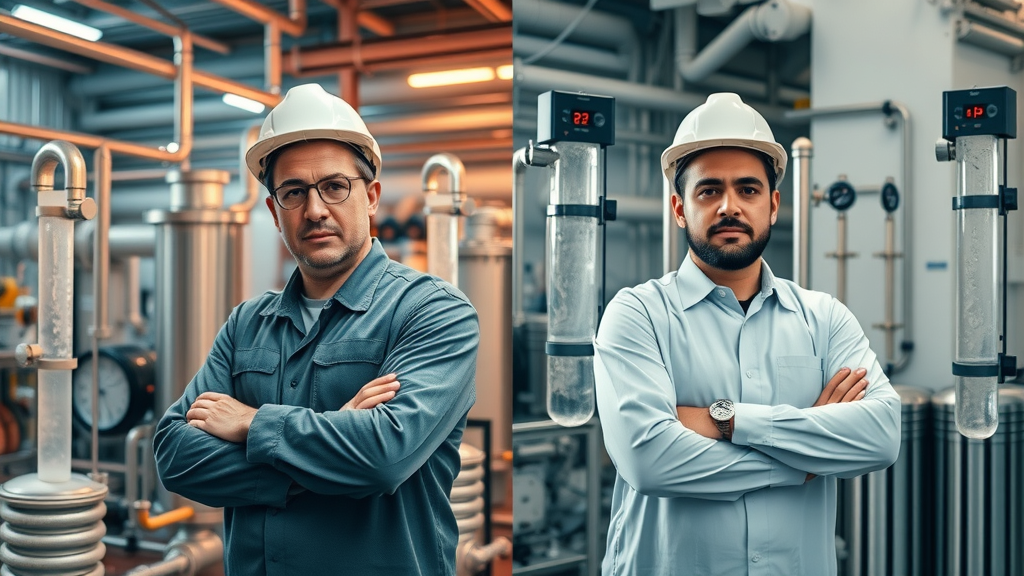
Desalination Process Efficiency: Reverse Osmosis vs. Distillation
Reverse osmosis desalination and distillation operate on very different scientific principles. While RO uses a semipermeable membrane and high pressure to filter out excess salts and contaminants, distillation evaporates feedwater and then condenses the vapor into pure water, leaving all dissolved solids behind. RO systems generally require less energy at scale and provide more rapid throughput, especially when equipped with the latest energy recovery technologies.
For plant managers, choosing RO over distillation frequently hinges on energy savings and operational flexibility. RO systems can be modular, responsive to demand changes, and adapted for varying source water qualities—while distillation is primarily used where energy costs are less of a concern or when extremely high purity is required. Overall, RO delivers an optimized balance of energy use, cost efficiency, and reliable water quality for most municipal and industrial desalination needs.
Water Quality and Safety: Reverse Osmosis vs. Other Filtration Systems
Reverse osmosis consistently outperforms many traditional filtration systems—like sand filtration or activated carbon—when it comes to removing dissolved minerals, salts, and challenging contaminants. While pre-treatment and post-treatment filters play a supporting role, only RO membranes can reliably convert seawater into safe, palatable drinking water. Filtration alone may not meet stringent standards required for direct potable reuse or specialized industrial applications.
Plant managers seeking to guarantee water quality for regulatory compliance, public health, and system longevity will increasingly favor reverse osmosis desalination. As innovative technologies further reduce costs and enhance reliability, RO will solidify its position as the gold standard in water treatment worldwide.
Comparison Table: Reverse Osmosis Desalination vs. Distillation and Alternative Water Treatment | |||
Metric |
Reverse Osmosis Desalination |
Distillation |
Other Filtration Systems |
|---|---|---|---|
Cost (per 1,000 gallons) |
Low–Moderate |
High |
Low |
Energy Use |
Low–Moderate (with energy recovery) |
High |
Low |
Water Quality |
Very High (removes salts, contaminants, microbes) |
High (removes nearly all contaminants) |
Moderate–High (varies by filter type) |
Scalability |
Excellent |
Limited |
Excellent |
Maintenance Needs |
Regular (membranes, pumps) |
Frequent (boilers, condensers) |
Low–Moderate |
People Also Ask: Reverse Osmosis Desalination FAQs
Can you desalinate water with reverse osmosis?
Yes, you can desalinate water using reverse osmosis. The process involves pushing seawater or brackish water through a semipermeable RO membrane under high pressure. This membrane selectively allows water molecules through, blocking salt ions and other impurities, resulting in fresh, potable water. That is why reverse osmosis desalination is a cornerstone of modern water treatment plants worldwide.
What are the problems with reverse osmosis desalination?
Common challenges in reverse osmosis desalination include membrane fouling, scaling, high energy consumption, and brine disposal. If not managed, these issues can impact both efficiency and water quality. However, advancements such as energy recovery devices, auto-cleaning systems, and smart monitoring have reduced many of these concerns for plant managers operating large-scale water treatment facilities.
Is RO water banned in Europe?
No, RO water is not banned in Europe. Reverse osmosis desalination systems are widely used, especially in southern European regions facing water scarcity. Certain countries have guidelines ensuring that mineral content is re-balanced before distribution as drinking water. There are no universal bans, and RO is considered a safe, effective technology for producing high-quality water in European desalination plants.
Can you drink sea water after reverse osmosis?
Yes, seawater treated through reverse osmosis desalination becomes safe to drink. The process removes dissolved salts, microbes, and harmful impurities, transforming raw seawater into clean drinking water that meets or exceeds international health standards. Remineralization steps may follow to enhance water taste and health benefits before distribution to consumers.
Key Takeaways: Maximizing the Benefits of Reverse Osmosis Desalination
Reverse osmosis desalination is essential for addressing global water scarcity.
Proper plant design and technology selection ensure water quality and cost-effectiveness.
Ongoing innovation improves energy efficiency and sustainability in RO systems.
Plant managers play a pivotal role in maintaining system performance and compliance.
Frequently Asked Questions about Reverse Osmosis Desalination
How do you maintain a reverse osmosis system in a desalination plant?
Maintenance includes regular cleaning of RO membranes, inspection of pumps, pre-treatment of feedwater, monitoring for fouling or scaling, and timely replacement of worn parts to sustain peak efficiency and water quality.What is the expected lifespan of an RO membrane?
The typical lifespan of an RO membrane in a desalination plant ranges from 3 to 7 years, depending on feedwater quality, operational parameters, and maintenance routines implemented by plant managers.How can plant operators reduce brine discharge impact?
Operators can reduce brine impact by incorporating energy recovery systems, optimizing concentrate handling processes, exploring brine reuse or recovery, and ensuring environmentally responsible brine disposal as part of plant compliance.What certifications apply to drinking water from RO desalination?
Drinking water from RO must comply with national and international standards, such as NSF/ANSI 58, WHO guidelines, or regional potable water regulations depending on deployment location and intended use.
Conclusion: The Strategic Role of Reverse Osmosis Desalination for Plant Managers
For plant managers, reverse osmosis desalination is more than a technology—it's a strategic tool to secure safe, sustainable water for today's communities and future generations.
Take Action: Enhance Your Plant with Reverse Osmosis Desalination Solutions
Looking for a Reverse Osmosis Desalination solution? | Call Us (800) 690-2436
Sources
Reverse osmosis desalination is a pivotal technology in addressing global water scarcity, transforming seawater into potable water through advanced filtration processes. The Claude “Bud” Lewis Carlsbad Desalination Plant in California exemplifies this, supplying approximately 50 million gallons of freshwater daily to San Diego County. (en.wikipedia.org) Similarly, the Taweelah IWP in Abu Dhabi, developed by ACWA Power, has become the world’s largest reverse osmosis desalination plant, producing over 831,000 cubic meters of desalinated water per day. (en.wikipedia.org) These facilities highlight the critical role of reverse osmosis in securing sustainable water supplies for growing populations.
 Add Row
Add Row  Add
Add 

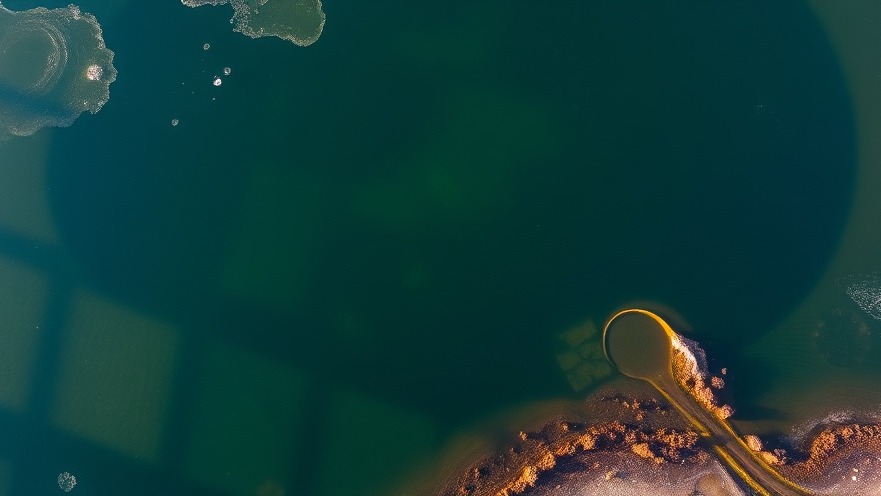
Write A Comment